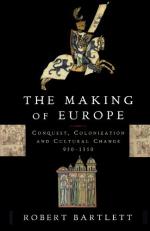|
This section contains 868 words (approx. 3 pages at 300 words per page) |

|
Bodies of Water. The continent of Europe is flanked by two great bodies of water—the Atlantic Ocean to the west and the Mediterranean Sea to the south. The Mediterranean had been the center of European civilization and trade since antiquity, while the Atlantic became its main highway for international relations after the sixteenth century. Most of Europe was easily connected for commerce by its many navigable rivers that emptied into large inland seas (notably the Baltic Sea to the north and the Black Sea to the southeast). The major rivers of western, central, and eastern Europe, including Russia, tend to flow in a north-tosouth axis, thus directing the movement of goods and raw materials between the Mediterranean Sea and the North Atlantic. The great rivers of France are the Garonne in the southwest, the Loire in the northwest, the Rhone in the...
|
This section contains 868 words (approx. 3 pages at 300 words per page) |

|




